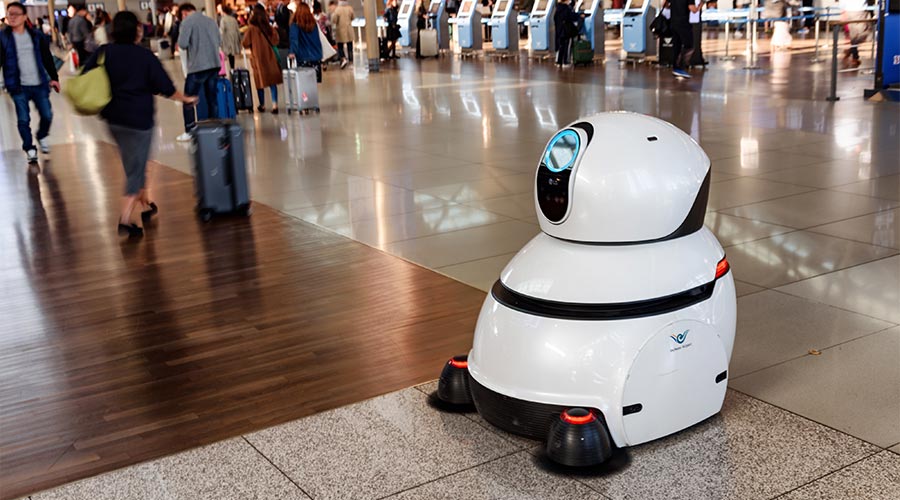
Cleaning crews face multiple hurdles when it comes to efficiently cleaning and maintaining hard-surface flooring. In the past, flooring teams knew they were likely to encounter either VCT or terrazzo floors. But the situation has become much more taxing. They now contend with all manner of substrates, including concrete, wood, LVT and LVP, rubber, woven, and solid vinyl, among others.
The mixing of these materials that goes on doesn’t make it any easier, according to Bill Luallen, vice president and technical director for XL North, a division of TRCC, located in Fall River, Massachusetts.
“Things such as marble inserts in a granite floor, or resilient flooring with transition abutting to carpet, wood bordering a travertine lobby — the designs are becoming more creative without necessarily understanding the challenges of maintaining them,” he explains.
Even more perplexing is when manufacturers come up with flooring that looks like something else entirely, Luallen claims, recalling when a technician was polishing a marble lobby and spied an adjacent “marble” hallway. The technician moved the machine to that location only to discover after ruining the floor that it was, in fact, LVT made to look like marble.
But even VCT flooring, which poses little mystery when it comes to cleaning and maintenance due to its long history (especially in schools, where it still predominates), can nevertheless fall prey to human miscalculation.
For example, VCT requires stripping and recoating with an acrylic-based finish, explains Eric M. Keller, director of National Accounts at BradyPLUS in Las Vegas. However, some in the industry try to find and apply urethane-based finishes for added durability.
“The removal of these products often becomes more problematic than the labor saved from less maintenance,” he says.
What types of hard surfaces might building service contractors soon begin seeing with greater frequency? According to those in the know, concrete flooring of all types, especially polished concrete, is trending thanks to its durability, relatively low maintenance requirements and attractive appearance. Luxury-type flooring is also making inroads.
“Anything that you would consider putting down in your home is now entering the commercial space,” says Keller. “This is especially true in office lobbies and kitchenettes. Pre-finished wood floors and LVP flooring are becoming especially prevalent in these spaces.”
Efficiencies vs. Costs
The evolution of flooring surfaces in commercial settings has cleaning industry manufacturers upping their game in terms of products and equipment. For example, the popularity of concrete flooring has increased the demand for industrial diamond floor pads used for honing these types of floors. Several manufacturers now offer products in this space.
Also evolving are cordless automatic floor scrubbers, which range from the most basic hands-on models to ones that are fully autonomous, requiring little human interaction. Equipped with scrubbing brushes, suction power, and tanks for holding clean and dirty water, the scrubbers can efficiently cover large areas of flooring, removing dirt and grime, while the vacuuming system is simultaneously sucking up the dirty water, leaving the floor clean and most importantly, dry. Better still, this equipment can be effective on a variety of flooring types.
Autoscrubbers vary in size, but over the past several years, lighter-weight and smaller machines have entered the market, says Karl Seagren, senior product consultant for Direct Supply in Milwaukee. Requiring less storage space and designed to be more ergonomic, they get the job done faster and better than microfiber mopping. He especially recommends orbital floor scrubbers, saying these can allow BSCs to increase efficiencies and achieve better results while reducing their equipment costs.
“Orbital scrubbers typically operate at much higher speeds than disc and cylindrical scrubbers, which allows them to be more versatile in the tasks they can perform. For example, an orbital scrubber can not only clean floors, but also prepare for new wax simply by switching from a buffing/scrubbing pad to a surface-prep pad,” Seagren explains, adding that one manufacturer has also recently introduced an orbital scrubber designed for cleaning tight spaces, such as those behind sinks and toilets.
Relying on a mop and bucket instead of an autoscrubber is not only inefficient, but it can also be difficult on those undertaking the task since mops are typically heavy, especially as they become more saturated with water, says Allen Rathey, director of the Indoor Health Council in Nampa, Idaho. And although wielding a microfiber mop — such as one with an adjustable aluminum extension wand or handle — is more ergonomic compared to a traditional string mop, it is nevertheless “a process that spreads around dirt and debris and should be avoided,” he says.
Rathey also favors dispense-and-vac or spray-and-vac machines, describing both as economical floor cleaning choices that offer many of the same benefits as an autoscrubber — but at lower price points. What is most important is using equipment that leaves floors clean, dry and more slip resistant (this latter characteristic is another factor propelling the growth of polished concrete flooring).
“Since slip-and-fall incidents are a major safety concern and liability, methods that leave floors clean and dry will save customers thousands if not millions of dollars annually in less slip-and-fall litigation. But most importantly, it will reduce injuries,” he says. “The dollars saved can be channeled into upgrading cleaning contracts and purchasing equipment, which can contribute toward paying workers better and increase support of environmental causes.”
Technology Steps In

 The Down and Dirty on Cleaning in Virus Season
The Down and Dirty on Cleaning in Virus Season How Surfactant Use is Expanding in Commercial Cleaning
How Surfactant Use is Expanding in Commercial Cleaning